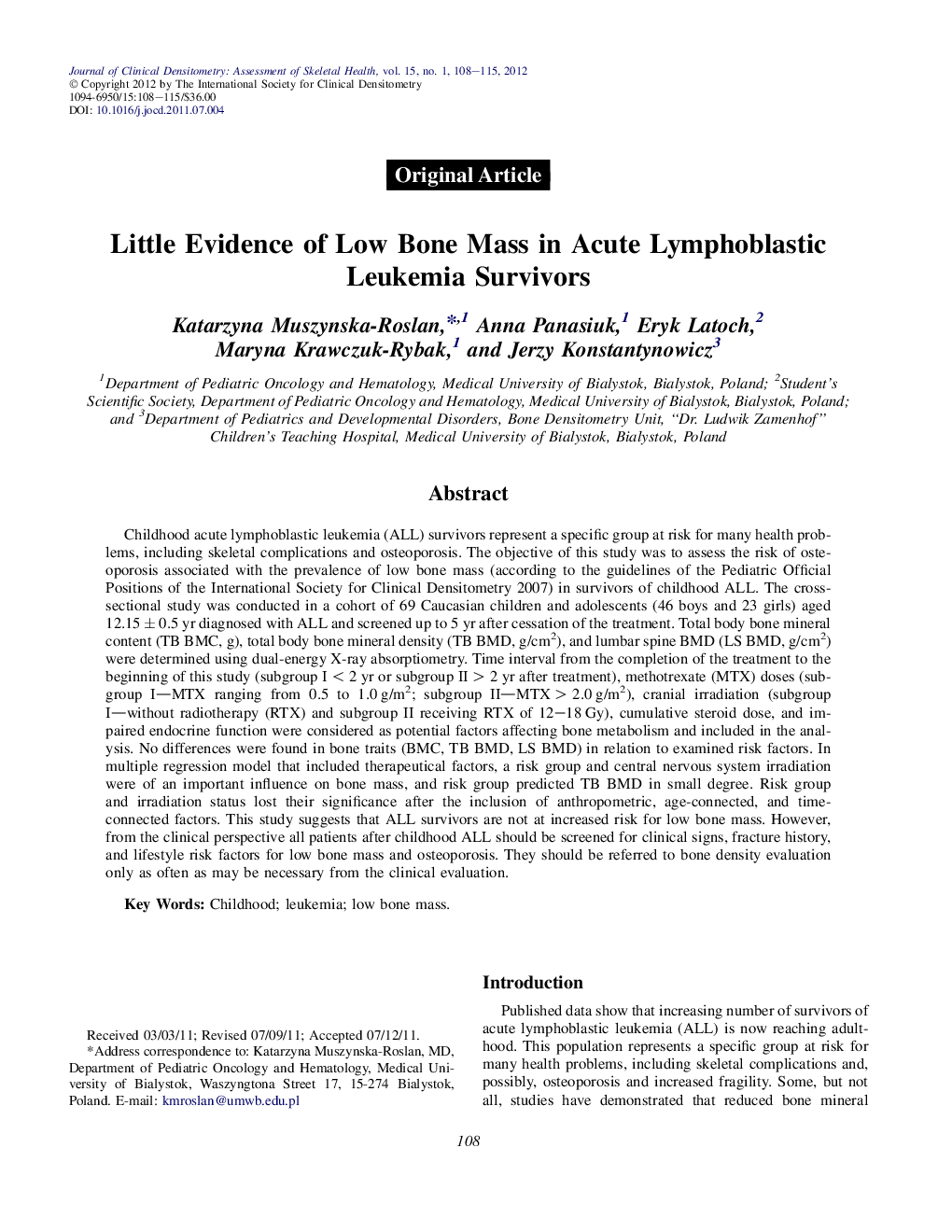| Article ID | Journal | Published Year | Pages | File Type |
|---|---|---|---|---|
| 3271150 | Journal of Clinical Densitometry | 2012 | 8 Pages |
Abstract
Childhood acute lymphoblastic leukemia (ALL) survivors represent a specific group at risk for many health problems, including skeletal complications and osteoporosis. The objective of this study was to assess the risk of osteoporosis associated with the prevalence of low bone mass (according to the guidelines of the Pediatric Official Positions of the International Society for Clinical Densitometry 2007) in survivors of childhood ALL. The cross-sectional study was conducted in a cohort of 69 Caucasian children and adolescents (46 boys and 23 girls) aged 12.15 ± 0.5 yr diagnosed with ALL and screened up to 5 yr after cessation of the treatment. Total body bone mineral content (TB BMC, g), total body bone mineral density (TB BMD, g/cm2), and lumbar spine BMD (LS BMD, g/cm2) were determined using dual-energy X-ray absorptiometry. Time interval from the completion of the treatment to the beginning of this study (subgroup I < 2 yr or subgroup II > 2 yr after treatment), methotrexate (MTX) doses (subgroup I-MTX ranging from 0.5 to 1.0 g/m2; subgroup II-MTX > 2.0 g/m2), cranial irradiation (subgroup I-without radiotherapy (RTX) and subgroup II receiving RTX of 12-18 Gy), cumulative steroid dose, and impaired endocrine function were considered as potential factors affecting bone metabolism and included in the analysis. No differences were found in bone traits (BMC, TB BMD, LS BMD) in relation to examined risk factors. In multiple regression model that included therapeutical factors, a risk group and central nervous system irradiation were of an important influence on bone mass, and risk group predicted TB BMD in small degree. Risk group and irradiation status lost their significance after the inclusion of anthropometric, age-connected, and time-connected factors. This study suggests that ALL survivors are not at increased risk for low bone mass. However, from the clinical perspective all patients after childhood ALL should be screened for clinical signs, fracture history, and lifestyle risk factors for low bone mass and osteoporosis. They should be referred to bone density evaluation only as often as may be necessary from the clinical evaluation.
Keywords
Related Topics
Health Sciences
Medicine and Dentistry
Endocrinology, Diabetes and Metabolism
Authors
Katarzyna Muszynska-Roslan, Anna Panasiuk, Eryk Latoch, Maryna Krawczuk-Rybak, Jerzy Konstantynowicz,
